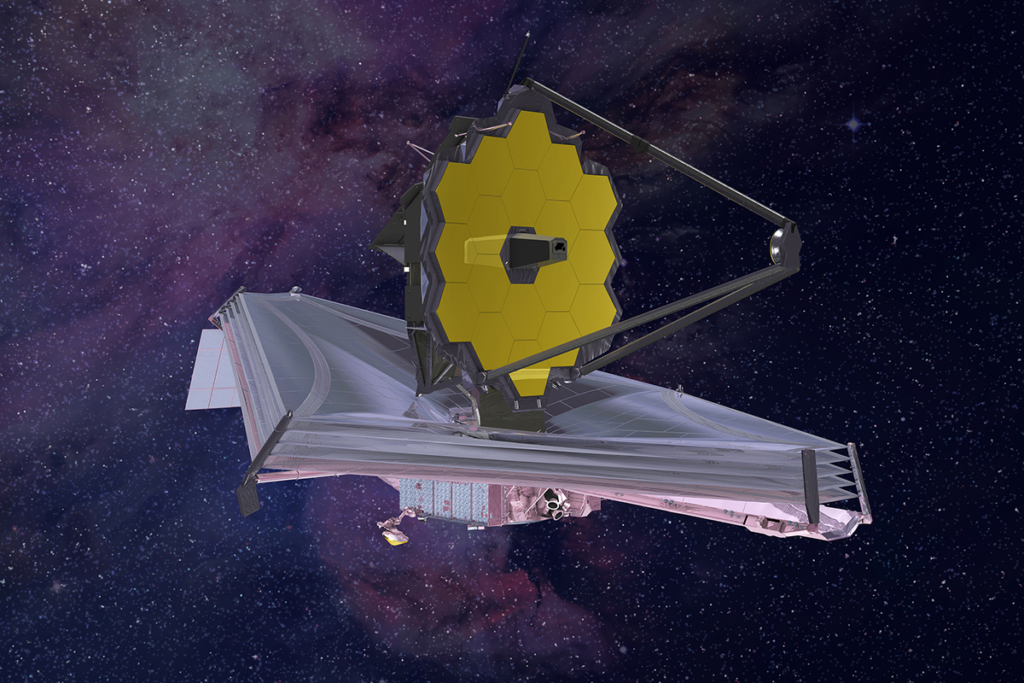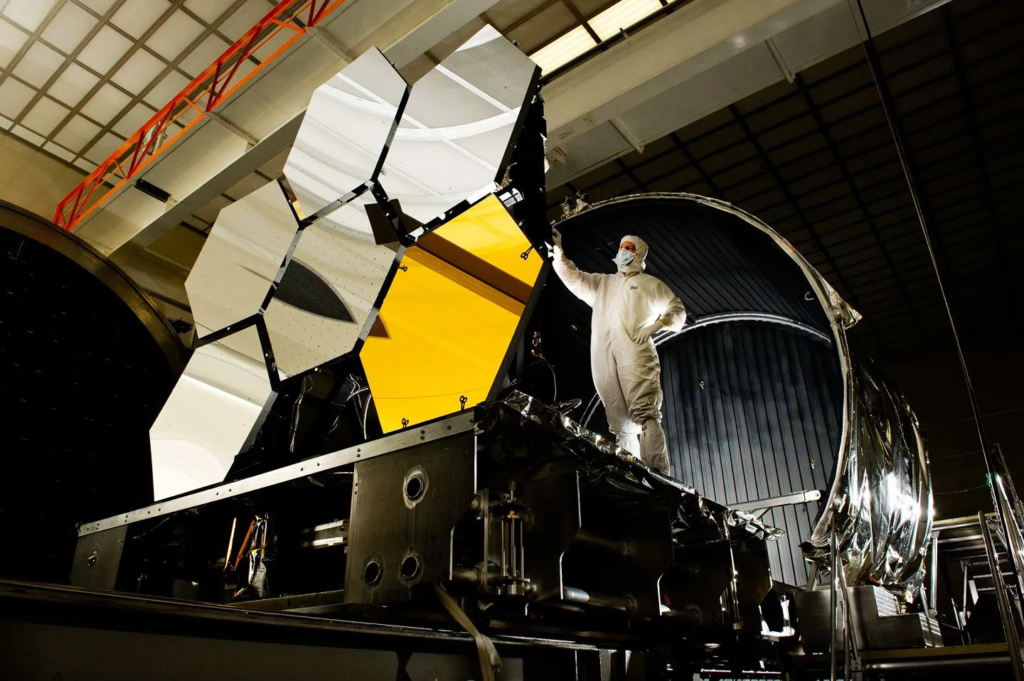
A Problem With The James Webb Space Telescope’s MIRI Instrument
The James Webb Space Telescope has been very busy since arriving at L2 back in early 2022. Already it has captured some incredible images and helped alter scientists’ perception of the Universe. At the same time, there have been a few complications along the way, including a recent issue with the MIRI instrument that may affect future operations.
Earlier this year the MIRI MRS mode indicated a reduction in the amount of light registered by the instrument. At the time, however, there wasn’t quite enough data and measurements to determine the exact problem. This being said, just days ago NASA released a new report highlighting that there is a reduced count rate in the long-wavelength filters of the MIRI Imager.
The anomaly will have an impact on the amount of exposure time needed when the instrument switches to the particular mode that’s been affected. The agency has also encouraged observers to contact them if their recent or planned science programs used or will utilize the Imager long wavelength filters. Here I will go more in-depth into the MIRI complication, how big of a deal this problem is, how it will affect future science operations, and more.
MIRI Complications

The Mid-Infrared Instrument (MIRI) has both a camera and a spectrograph that sees light in the mid-infrared region of the electromagnetic spectrum, with wavelengths that are longer than our eyes see. Specifically, MIRI covers the wavelength range of 5 to 28 microns. In terms of images, this allows it to see the redshifted light of distant galaxies, newly forming stars, and faintly visible comets as well as objects in the Kuiper Belt. Within the MIRI instrument is the Medium-Resolution Spectrometer (MRS) which provides one of the four operating modes of MIRI.
On April 21, 2023, the JWST team announced that the MIRI Medium Resolution Spectrometer (MRS) exhibited a reduced count rate. The initial analysis of the MIRI imager did not show a similar effect. At that point, however, the available calibration data were not sufficient for a robust measurement. As part of the MRS investigation, additional monitoring observations were taken with the MIRI imager. In a recent report NASA was quoted saying, “In combination with earlier calibration data, these new calibrations have revealed a reduced count rate in the long-wavelength filters of the MIRI Imager. The effect in the Imager is at a lower level than the effect in the MRS.”
Looking at the MIRI imager filter wheel, it features 18 different filters in total. Of these, 5 have recorded a reduced count rate ranging from 3% all the way to 18%. In other words, the data show a measurable reduction in count rates from the F1280W filter onwards, with the effect increasing with wavelength. The observed reduction per filter between the JWST commissioning period and July 2023 is shown in the table below. Investigations are ongoing for the impact in the coronagraphic filters. On the bright side the shorter wavelength filters (F560W, F770W, F1000W, F1130W) do not show a detectable effect.
As far as how this impacts future operations, the agency was quoted saying, “Users wishing to propose observations for Cycle 3 in filters F560W through F1800W can assume the SNR calculations in the ETC are sufficiently accurate (nominally, the SNR goes as the square root of the count rate). For the F2100W and F2550W filters, we recommend adding margins of 5% on the SNR to mitigate for the observed loss.
Currently, the root cause of this issue is still under investigation, with a combined focus on MRS and Imager. Regular monitoring observations are being taken with the MIRI imager to continue measuring the photometric response, and to characterize the temporal trend alongside what has been observed in the MRS. The JWST team is working to improve the temporal trending to evaluate if the imager loss rate is stabilizing, as is observed in the MRS data.
To compensate for this count rate loss in the JWST calibration pipeline, the MIRI team will update the calibration reference files and the pipeline to include a time-dependent correction to the flux calibration. These changes are expected to be operational in mid-autumn 2023. A similar correction has already been implemented for the MIRI MRS.
In one final quote they said, “MIRI science operations will remain unchanged at this time. Observers who are concerned about their recent or planned science programs using the Imager long wavelength filters should contact the MIRI team. The Webb team has also enacted a plan for long-term monitoring, and are exploring potential mitigations. The observatory is in good health, and each of Webb’s other scientific instruments are unaffected” they said.
Other Errors

Unfortunately, this is not the first time the MIRI instrument has run into issues. Interestingly, despite the four available modes within the MIRI instrument, almost a year ago, the same MRS mode was experiencing some complications.
On Aug. 24, the medium-resolution spectroscopy mode, exhibited what appeared to be increased friction during setup for a science observation. This mechanism is a grating wheel that allows scientists to select between short, medium, and longer wavelengths when making observations using the MRS mode. Following preliminary health checks and investigations into the issue, an anomaly review board was convened Sept. 6 to assess the best path forward.
At the time, the Webb team paused scheduling observations using this particular observing mode while they continued to analyze its behavior and began developing strategies to resume MRS observations as soon as possible. A few months later the team concluded the issue was likely caused by increased contact forces between sub-components of the wheel central bearing assembly under certain conditions. Based on this, the team developed and vetted a plan for how to use the affected mechanism during science operations.
An engineering test was executed on Nov. 2, that successfully demonstrated predictions for wheel friction. The team started to schedule additional MRS science observations, initially at a limited cadence, following a plan to keep the affected wheel in balance, monitor wheel health, and prepare MIRI MRS for a return to full science operations. Whether or not this past issue had anything to do with the recent problem is unlikely.
With a price tag of around $10 billion and decades of work put into this telescope, it needs to remain in good health for as long as possible. The initial minimum mission lifetime was set at 5 years. However soon after launch, the Webb team analyzed its initial trajectory and determined the observatory should have enough propellant to allow support of science operations in orbit for significantly more than a 10-year science lifetime. With this much fuel available, it’s possible that its life is not determined by fuel but instead by instrument and exterior health.
About one year after the JWST had launched, one NASA official was quoted saying, “We have experienced 14 measurable micrometeoroid hits on our primary mirror, and are averaging one to two per month, as anticipated. The resulting optical errors from all but one of these were well within what we had budgeted and expected when building the observatory.” He went on to say, “One of these was higher than our expectations and prelaunch models; however, even after this event our current optical performance is still twice as good as our requirements.”
Micrometeoroid strikes are an unavoidable aspect of operating any spacecraft, which routinely sustain many impacts over the course of long and productive science missions in space. Between May 23 and 25, NASA’s James Webb Space Telescope sustained an impact to one of its primary mirror segments. After initial assessments, the team found the telescope is still performing at a level that exceeds all mission requirements despite a marginally detectable effect in the data. Thorough analysis and measurements are ongoing. Impacts will continue to occur throughout the entirety of Webb’s lifetime in space; such events were anticipated when building and testing the mirror on the ground. After a successful launch, deployment, and telescope alignment, Webb’s beginning-of-life performance is still well above expectations, and the observatory is fully capable of performing the science it was designed to achieve.
Furthermore, Webb’s capability to sense and adjust mirror positions enables partial correction for the result of impacts. By adjusting the position of the affected segment, engineers can cancel out a portion of the distortion. This minimizes the effect of any impact, although not all of the degradation can be canceled out this way. Engineers have already performed an adjustment like this after an impact. These steps will be repeated when needed in response to future events as part of the monitoring and maintenance of the telescope throughout the mission.
To protect Webb in orbit, flight teams can use protective maneuvers that intentionally turn the optics away from known meteor showers before they are set to occur. They point out that the one large hit was not a result of a meteor shower and is currently considered an unavoidable chance event. As a result of this impact, a specialized team of engineers was formed to look at ways to mitigate the effects of further micrometeoroid hits of this scale. Over time, the team will collect invaluable data and work with micrometeoroid prediction experts at NASA’s Marshall Space Flight Center to be able to better predict how performance may change, bearing in mind that the telescope’s initial performance is better than expected. In the coming years, hopefully, Webb will stay in good condition and avoid any instrument errors and impacts.
Conclusion
NASA just reported some issues with Webb’s MIRI instrument and the MRS mode in particular. This has affected the longer wavelengths and could end up changing some future observations as well. We will have to wait and see how it progresses and the impact it has on the space industry.
